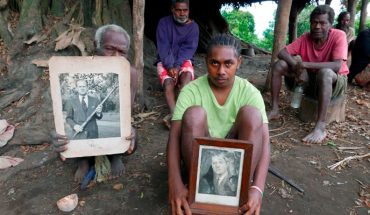La Confederation Patronal de la República Mexicana (Coparmex) proposes that “partial recovery fees” are established in the public universities in Mexico. According to entrepreneurs that make up that body, that would be one way of ensuring the economic viability of such educational institutions.
In a statement, the Coparmex pointed out that the growth of the system of higher education in Mexico has been significant in terms of coverage and installed physical abilities; However, “systemic weaknesses in the educational process and the frequent lack of relevance of the transferred knowledge and skills taught, have deteriorated its ability”.
According to the Organization of entrepreneurs, at least ten state universities are in a State of insolvency, and others are “serious signs” of lack of liquidity.
“In Coparmex we agree with the President-elect, Andrés Manuel López Obrador, on the need to reform the system of higher education in Mexico,” said, but not with the construction of more universities, but with the enables “fullness” of the existing installations.
This, because one of the proposals of the now President-elect in campaign was the build 100 public universities throughout the country.
However, he expressed the Coparmex “a gratuity system blind, wishful thinking can affect mostly public universities now operating with financial health, and at the same time, be regressive to promote greater opportunities and social capillarity”, said the Coparmex.
Entrepreneurs suggested “a paradigm shift”, recognize the different economic profiles which have access to higher education in its various forms, because “today, a significant part of tuition for public universities is comprised of students from families of higher income deciles”.
The model posed by the Coparmex based economic viability on “the possibility of partial recovery fees at the universities public, applicable to persons that Yes can help solve costs of the education service”.
In a complementary manner, and to expand the opportunities of access to education, proposed that the federal Government concluded agreements with private universities ‘ quality recognized, for those applicants who meet the academic profiles of income, ” They can obtain, in a transparent way, full or partial scholarships”.
The Coparmex also pointed out that universities should redesign programs, content of curricula and teaching models, because “the international context requires professionals prepared to be competitive”.
From education, with quality and relevance, our country can generate increasing levels of well-being, promote their economic and future development, build a global leadership. Now available the week #SeñalCoparmex https://t.co/CjHEviaNOB pic.twitter.com/oh0x3jwsHK – national Coparmex (@Coparmex) August 20, 2018 in Mexico, entry to higher education has been a constant challenge: until 2016, only 17% of persons aged 25 and 64 years of age had completed higher education.
Until the 2016 cycle, the rate of schooling in higher education was 32.1%, according to the fifth report of the President Enrique Peña; i.e., only 3 of every 10 young people in age of studying the University could do so.
Strike of the 99 in the UNAM between 1999 and 2000, in the National Autonomous University of Mexico (UNAM) created a student movement against the modification of the General payment rules, which aimed to modify the concepts of payment for registration, fee half-yearly and services, making them mandatory.
This proposal caused different student groups will constitute in Assembly and is raised by the strike as the only possible response to the posture of the rectory.
Following the adoption of the new regulation, on March 15 of that year, increased reactions and the student demonstrations, which finally resulted in the beginning of the student strike, on April 20, 1999.
In 2000, a plebiscite by rectory, were summoned to strike the opinion of the University community on the proposal of the UNAM to rescind the approved regulation, in Exchange for ending the strike.
The 90% of those who participated in the consultation voted to end the strike. The conflict ended with the entry of the Federal Preventive Police, Sunday, February 6, 2000.





